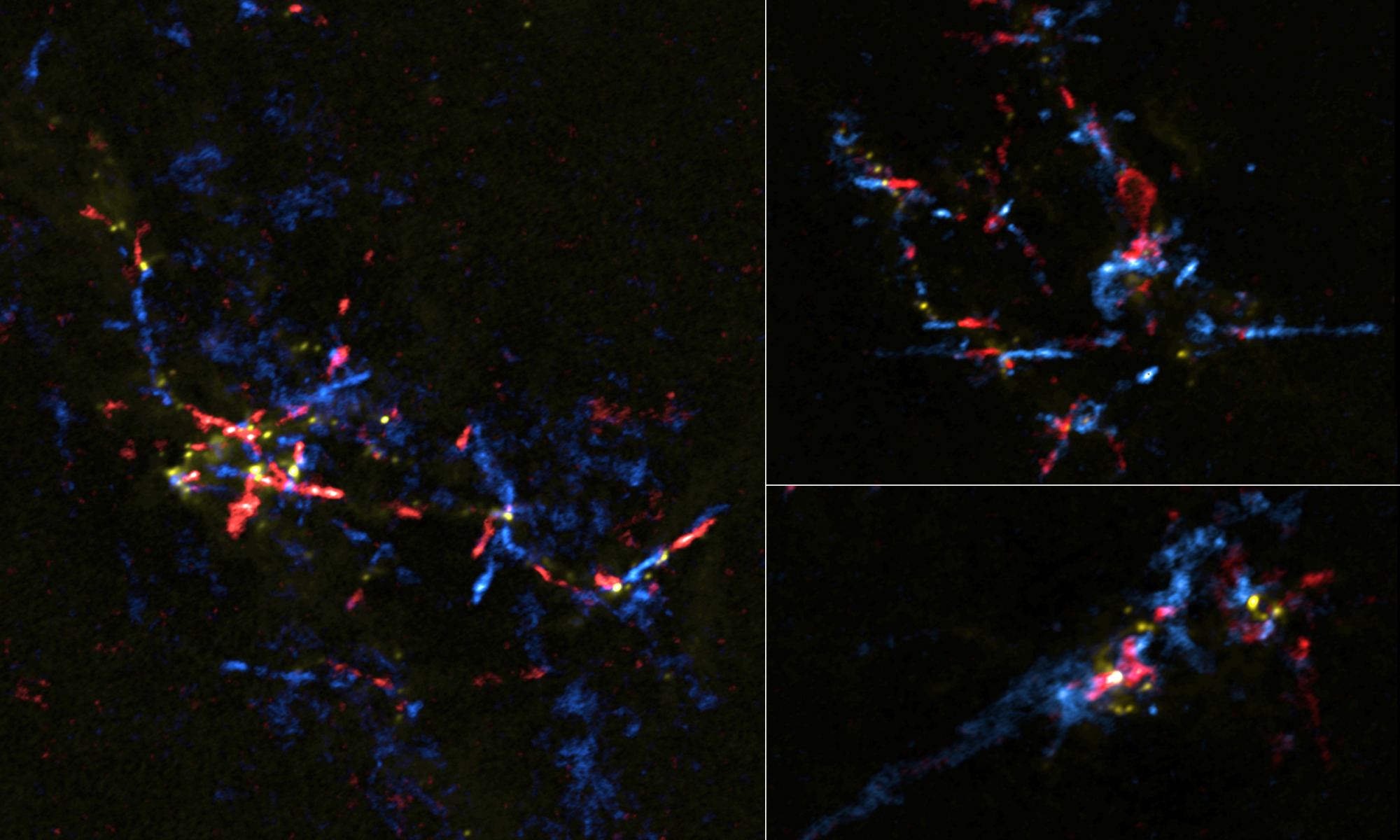The central core of our galaxy is not a friendly place for star formation, and yet new observations have revealed almost four dozen newly-forming systems. These results challenge our understanding of the complicated physics of our galactic heart.
The core of our galaxy may be pretty, but it’s not a friendly place. Within the innermost 1000 light-years of the core, known as the Central Molecular Zone (CMZ), there’s simply too much activity for stars to form. Stars can only form after clumps of gas cool and condense, and anything that disrupts that process will prevent star formation. In the core, heating and turbulence from all the frenetic activity was long thought to put the brakes on new star formation in the CMZ.
But a team of astronomers using the ALMA telescope found a surprise.
“It is like hearing babies’ cries in a place we expected to be barren,” says Xing Lu, an astronomer at the National Astronomical Observatory of Japan. “It is very difficult for babies to be born and grow up healthily in an environment that is too noisy and unstable. However, our observations prove that even in the strongly disturbed areas around the Galactic Center, baby stars still form.”
The team was able to detect over 800 dense cores of gas and dust. These “eggs” have the potential to eventually become stars. But to look for active star formation, the team had to find something else: energetic outflows coming out of the cores, a key signal that stars are beginning to form within them.
In the deserted CMZ, the astronomers found 43 cores with outflows. Previous estimates of star formation within the CMZ had predicted that new stars should only arrive at about a tenth of the rate in the solar neighborhood.
“Although previous observations have suggested that overall star formation rates are suppressed to about 10% in the giant molecular clouds in the Galactic Center, this observation shows that the star formation processes hidden in dense molecular gas clouds are not very different from those of the Solar neighborhood,” explains Shuichiro Inutsuka, a professor at Nagoya University and a co-author of the research paper. “The ratio of the number of star-forming cores to star-less cores seems to be only a few times smaller than that in the Solar neighborhood. This can be regarded as the ratio of their respective lifetimes. We think that the average duration of the star-less core stage in the Galactic Center might be somewhat longer than in the Solar neighborhood. More research is needed to explain why it is so.”
The team hopes to investigate these cores further with ALMA and other telescopes to get a better sense of this surprising result – and what it might mean for our understanding of star formation throughout the galaxy.

